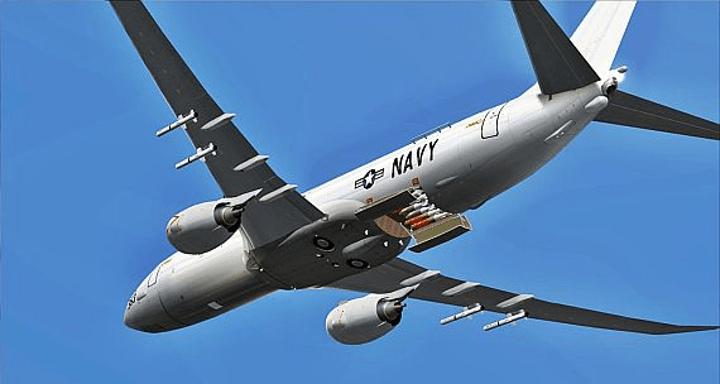Some victories are obtained through hard struggle, others, less glorious but just as effective, for lack of an adversary. It is probably this last case that explains the success of Boeing's P-8A Maritime Patrol aircraft in recent years. Entering service in 2013 to replace the US Navy's P-3 Orion, the Poseidon has since established itself in 7 other air forces, and not the least, ranging from Australia to Norway, via Germany and even India. To date, 131 aircraft have been ordered from Boeing, including 91 by the US Navy, while more than 90 are in service, mostly in the US Navy. It seems that this list is about to expand again, as Ottawa sent last February, a request for information from the American Foreign Military Sales about the aircraft, in order to replace the 15 CP-140M Aurora, an evolution of the P-3, which carry out the mission of maritime patrol and C4ISR. within the Royal Canadian Air Force.
Remarkably, the Ottawa press release specifies that today, the P-8A is not only a good device already acquired by several major countries, including by the 4 other allies of the famous 5 Eyes bringing together USA, Canada, Australia , New Zealand and Great Britain, but that it constitutes, in essence, the only possible alternative for this type of mission. It is true that with the notable exception of the more economical and more compact Japanese Kawazaki P-1, but with performance inferior to that of the Boeing aircraft based on the 737, there is to date no real offer capable of both offer performance comparable to the P-8A, and an extensive fleet guaranteeing durability and scalability for the next 2 or 3 decades.

Almost 40 meters long for 37,5 meters wingspan, the P-8A has an empty weight of 62 tons and a maximum take-off weight of 85 tons. It is powered by two CFM-56 turbojet engines each delivering 121 KN of thrust, giving it a cruising speed of 815 km/h for a combat range of over 7000 km. It also has a powerful APY-10 multi-mode radar with a direct or inverted synthetic aperture mode, as well as a suite of APS-154 sensors for littoral detection, and an electronic warfare suite. ALQ-240. The aircraft has a hold with 5 anchor points and 3 anchor points under each wing allowing it to carry numerous armaments, such as the AGM-84 Harpoon anti-ship missile, the Mk-54 torpedo, airborne naval mines as well as the future air-to-surface anti-submarine munition High Altitude Anti-Submarine Warfare Weapon Capability (HAAWC) which will make it possible to engage submarines from a high altitude and from a safe distance.

The rest of this article is for subscribers only
The Classic subscriptions provide access to
all articles without advertising, starting at € 1,99.
Newsletter subscription
Register for the Meta-Defense Newsletter to receive the
latest fashion articles daily or weekly


[…] […]
[…] to replace its fleet of 15 CP-140M Aurora maritime patrol aircraft derived from the Lockheed P-3 Orion, with the new American Boeing P-8A Poseidon. But in the naval field, the greatest revolution to come for the Royal Canadian Navy, […]
[…] to have sent a request for information to the American Foreign Military Sales, with a view to acquiring 16 P-8A Poseidon maritime patrol aircraft from the aircraft manufacturer Boeing… which provide these missions as well as electronic intelligence within the Royal Canadian […]